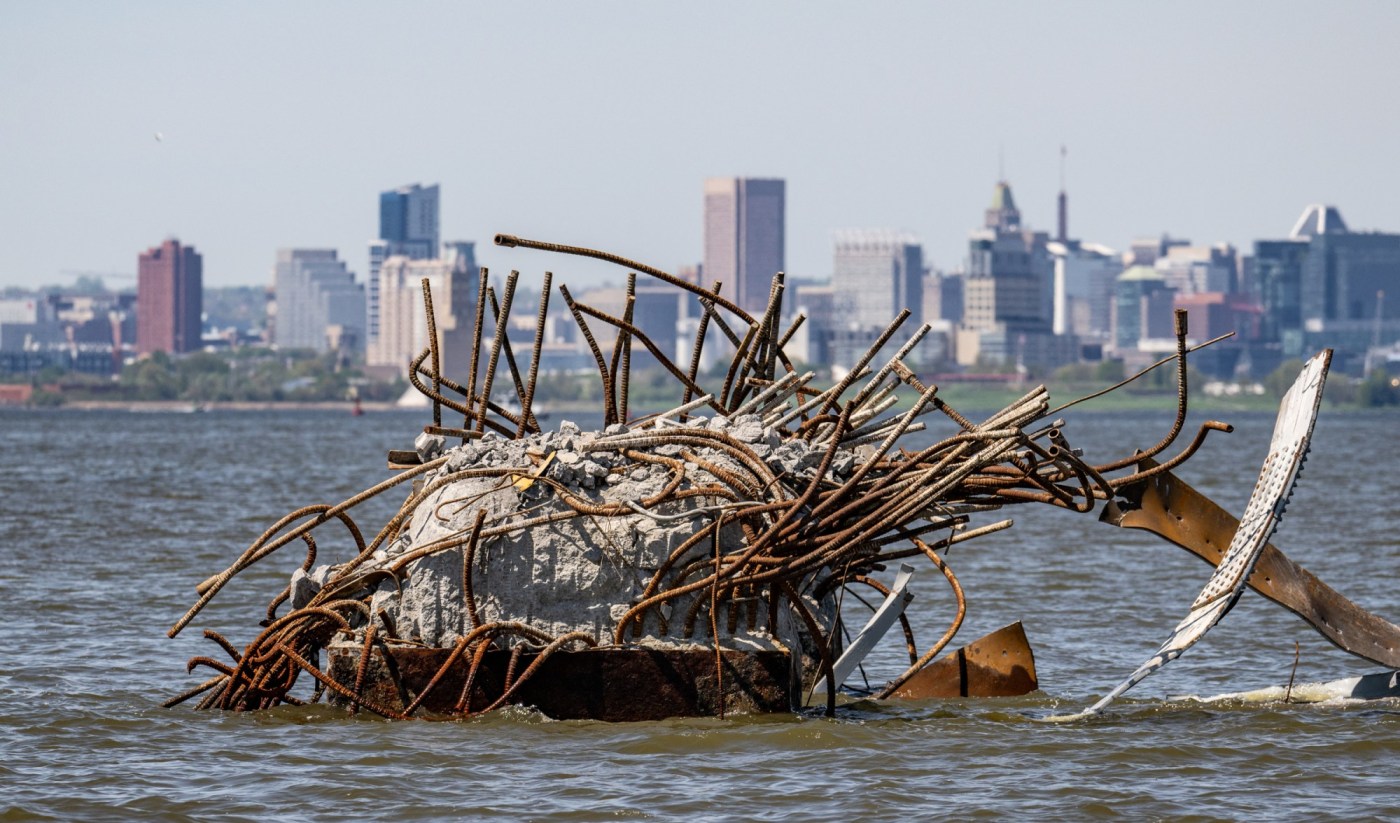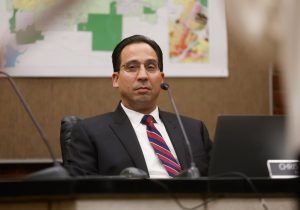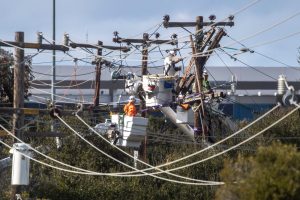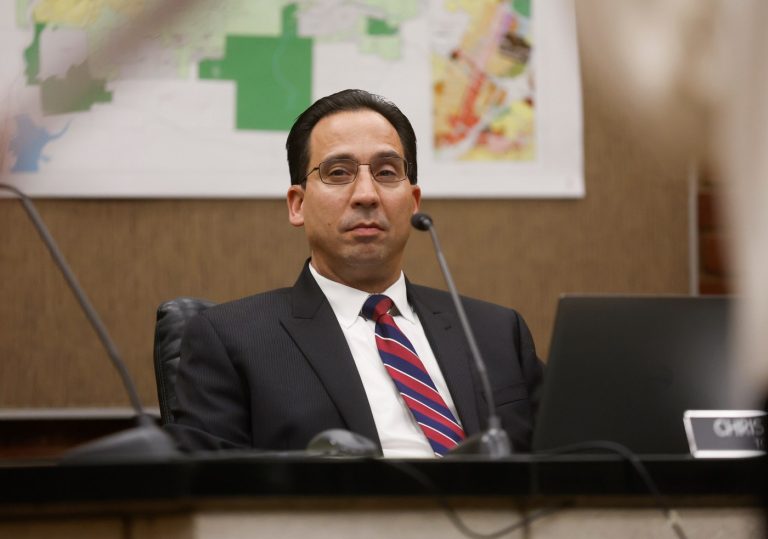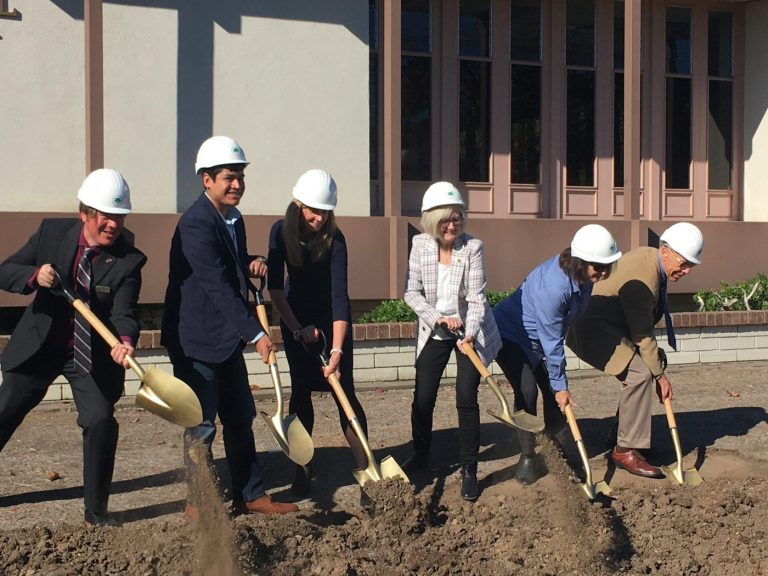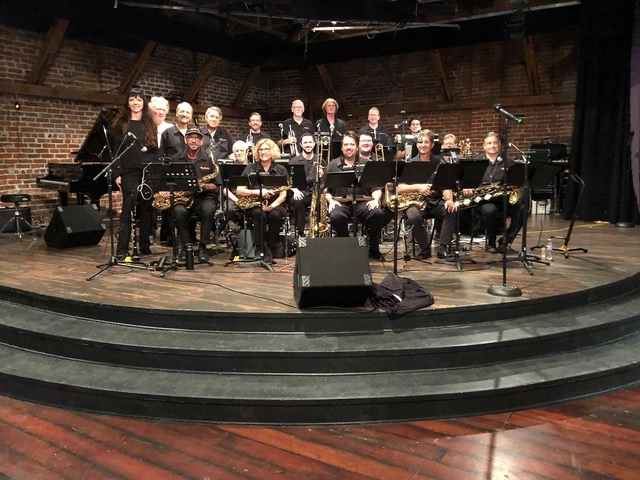When the Francis Scott Key Bridge was inspected in May 2021, it earned high marks.
Its railings and guardrails met modern standards. Its foundations were “stable” and didn’t show signs of erosion at the riverbed. The protection around its piers was “functioning,” the best grade in that category.
It wasn’t, however, assessed for its ability to withstand a collision from a vessel.
A collision came, though. In the early hours of March 26, a massive cargo ship — much larger than the average ship when the bridge was built in 1976 — crashed into one of the bridge’s vital supports. The impact sent those railings, guardrails and roughly 50,000 tons of steel and concrete tumbling into the Patapsco River. The catastrophe killed six men fixing potholes on the bridge, launched arduous efforts to clean up what could be the costliest maritime accident ever and prompted an already litigious fight over who will foot the bill. The National Transportation and Safety Board is investigating the incident with a focus on the ship’s electrical system and the FBI is conducting a criminal probe.
Bridge inspections are typically completed by the bridge owner or one of its contractors, then the owner provides the data to the federal government. The Key Bridge’s 2021 inspection is the most recent included in the Federal Highway Administration’s National Bridge Inventory.
Although protection from a ship strike is considered when any bridge is constructed today, there are no federal statutes, regulations or policies that require existing bridges be evaluated for the possibility of a vessel collision. Whether to do so is left to the judgment of each bridge’s owner, the Federal Highway Administration told The Baltimore Sun.
Some bridge owners elsewhere — including ones in California, Delaware and New York — say they already do that.
Asked whether the Key Bridge or the Chesapeake Bay Bridge were ever evaluated for vessel collision, the bridges’ owner, the Maryland Transportation Authority, offered a statement instead of an answer: “Our asset management program continually prioritizes asset needs based on age, condition, criticality and risk. We will continue to evaluate the condition of bridges as well as their risks as part of our well-established nationally recognized programs.”
The authority said that “with the Key Bridge incident in mind, there has been a renewed focus on pier protection” of its bridges and it will consider any recommendations made by the NTSB.
But that agency’s final report could take up to two years. NTSB Chair Jennifer Homendy told members of Congress earlier this month that evaluating “pier protection” is something that bridge owners can do now.
“There’s still action that needs to occur to look, frankly, at how shipping has changed over the years, how transportation has changed in our waterways, the types of vessels that we are seeing, the types of container ships that we are seeing, the volume of traffic, and looking at bridge designs,” she said.
“If I were a state and the Department of Transportation, that’s what I would be looking at now — are these bridges protected for the types of traffic that is going through now?” Homendy told a Senate committee.
Bridge collapse due to vessel collision is rare and it took a nightmarish scenario to bring about disaster in Baltimore. The Dali, a cargo ship the size of the Eiffel Tower, appeared to lose power at the most inopportune moment, causing an unthinkable calamity.
Only, it wasn’t entirely unthinkable to some. In 2016, Michael A. Knott, a Moffat & Nichol engineer with expertise in bridge strikes, presented to a group of engineers in Baltimore on the topic of “Ship & Barge Collisions with Highway Bridges.” Referencing 35 instances of major bridge collapses worldwide since 1960, Knott explained that vessels run into trouble for several reasons, including engine or steering failure.
“Accidents do happen,” reads text from his slideshow. “It’s Only A Matter of Time.”
A ’70s bridge in 2024
Related Articles
Report: Communications breakdown exacerbated Maui fire’s impact
FBI agents board cargo ship that caused Francis Scott Key Bridge collapse
Crack in rural Utah dam puts nearby town at risk
President Biden tells Baltimore ‘your nation has your back’
Reminder: Closure of Highway 1 in Santa Cruz County set Saturday for 24 hours
Knott, who presented to Maryland’s section of the American Society of Civil Engineers, wasn’t specifically referencing the Key Bridge (although his slideshow did note a 1980 incident in which a much smaller ship hit the bridge). But bridges with piers in navigable waterways are at risk of collision, even if it’s to a small degree. For decades, the Key Bridge and its southern counterpart, the Bay Bridge, had avoided disaster despite thousands of ocean liners passing under them annually.
As long as everything goes as planned, there is no damage done. But things go wrong. In 2022, a Maryland pilot onboard the Ever Forward was distracted by his cellphone and the cargo ship missed a turn in a 50-foot deep channel, running aground in the bay. And at least 42 vessels have experienced propulsion, steering or power problems in Maryland waters since the start of 2021, according to a Sun analysis of U.S. Coast Guard reports.
Related Articles
Report: Communications breakdown exacerbated Maui fire’s impact
FBI agents board cargo ship that caused Francis Scott Key Bridge collapse
Crack in rural Utah dam puts nearby town at risk
President Biden tells Baltimore ‘your nation has your back’
Reminder: Closure of Highway 1 in Santa Cruz County set Saturday for 24 hours
When a vessel goes astray, it’s up to safety precautions, like fenders that protect piers or tugboats that steady cargo ships, to prevent catastrophe.
Tugboats have not been required to assist ships under the Key Bridge. And although the bridge’s “pier abutment protection” received high marks during its 2021 inspection, that rating determined merely the “condition” of the protective system — not its strength. It’s similar to inspecting an original Ford Fiesta; despite not having an airbag, its existing safety features could be in working condition, even if they’d be considered inadequate for today’s world.
The bridge was also evaluated in 2023, but that data is not yet available from the Federal Highway Administration. The Sun asked the state transportation authority for the evaluation records, but the agency said it couldn’t provide them because of the ongoing NTSB investigation.
The Key Bridge had four small concrete “dolphins” — artificial islands meant to deflect vessels from bridge supports — along its channel as buffers for its two biggest support columns. They paled in comparison to protective systems of modern bridges. Auburn University engineer Andrzej Nowak likened them to “kids’ toys.”
Still, the Key Bridge’s pier protection received the same score (“in place; functioning”) in 2021 as the Sunshine Skyway Bridge in Tampa, heralded as one of the most protected American bridges.
Whether or not a fortified system could have withstood the gigantic force generated by the 984-foot, 248-million pound behemoth traveling 8 mph is debated by engineers. When asked if Tampa’s Sunshine Skyway — which was knocked down in 1980, then rebuilt with significant protections — could have withstood the Dali’s strike, the Florida Department of Transportation said it would be “unable to make a comparison,” given the multiple factors.
Because it makes shipping more cost-effective, container ships have grown and grown in recent decades. Since the Key Bridge was built 48 years ago, cargo ships have more than quadrupled in tonnage, experts say. Without increased safety measures, the Key Bridge brought 1970s protective equipment to a 2020s catastrophe.
And ships keep growing. In Savannah, Georgia, the state is spending $189 million to increase the height of the Talmadge Memorial Bridge to welcome even bigger ships to its port. That bridge is currently 185 feet tall, about the same size as the Bay Bridge and the Key Bridge before its collapse, but its center span will be raised 20 feet.
“Nobody anticipated the size of ships that we have today,” former Maryland Transportation Secretary James Ports said. “They probably would’ve constructed a very different bridge had they been able to have a crystal ball.”
Inspectors check the underside of the remaining structure of the Francis Scott Key Bridge near Fort Armistead Park in Baltimore. (Jerry Jackson/Staff)
Ill-equipped for strike
Bridges that carry U.S. highways — as well as many state roads — are required to follow a code detailed in thousands of pages of guidelines from the American Association of State Highway and Transportation Officials (AASHTO), which has an entire section on vessel collision. But that wasn’t the case when many bridges were built; the guidebook added those specifications in the 1990s.
“The Key Bridge was designed to the standards at the time it was constructed in the early 1970s, which pre-dates any formal AASHTO guidance on vessel collision,” said Jason Hastings, the vice chair of AASHTO’s Committee on Bridges and Structures, in a statement to The Sun. “There have been significant changes in design specifications since that time, so a new bridge constructed today would be designed with different consideration given to vessel collision.”
For existing bridges, it’s up to their owners to assess their ability to withstand vessel strikes. San Francisco’s Golden Gate Bridge, for example, has not undergone a vessel collision analysis because of the “extensive tower protections already in place,” according to a Golden Gate Bridge Highway and Transportation District spokesperson. A spokesperson for the California Department of Transportation, which maintains many other bridges in the state, said it evaluates “bridges for numerous potential threats, including rigorous and strict seismic standards that are very similar to — and in some cases more powerful than — vessel collisions.”
Existing bridges can be retrofitted, in some instances. Engineers evaluated the Delaware Memorial Bridge’s fender protection system, which dates to the 1950s and 1960s, and determined that “additional protective measures were a priority,” a Delaware River and Bay Authority spokesperson said. The authority began a $95 million project in 2023 to reinforce the Wilmington bridge by adding eight dolphins.
In Canada, the British Columbia Ministry of Transportation and Infrastructure “preemptively” reviewed Vancouver’s Lions Gate Bridge and Ironworkers Memorial Second Narrows Crossing in 2015. Both are being retrofitted to “strengthen their resilience in the extremely unlikely event of vessel impact,” according to the ministry.
There is “continual re-evaluation” of New York City’s bridges and “anti-collision infrastructure” was upgraded on some in 2008, 2021 and 2023, according to Metropolitan Transportation Authority spokesperson Aaron Donovan. All of the authority’s bridges “have been evaluated based on the current AASHTO Guide Specifications for Vessel Collision Design of Highway Bridges, and either found to be in compliance or are currently being upgraded to meet or exceed the standard,” he said in a statement.
Whether or not existing bridges should be evaluated for vessel strikes is “a complex and controversial issue,” according to Jean-Paul Rodrigue, a Texas A&M University professor of maritime business administration whose research focuses on transportation and economics.
A key factor is money. It’s expensive to analyze bridges and to boost their protections.
But Nowak, chair of Auburn’s civil and environmental engineering department, said that extra attention should be given to bridges deemed vital — like the Key Bridge.
“The Baltimore bridge, as important as it is, should be inspected for [the] possibility of vessel collision,” he said.
Measures were taken to reinforce both the Key Bridge and the Bay Bridge in recent decades, but they focused upon intentional threats — like truck bombs — rather than the numerous cargo ships that regularly pass peacefully under the bridges, said Ports, the former state transportation secretary.
After the attacks of Sept. 11, 2001, as well as attempts to blow up airplanes with bombs, authorities prepared for potential acts of terror. While commercial planes were hijacked Sept. 11 and crashed into buildings, officials believed a bombing was more likely than the seizure of a cargo ship to ram the bridge.
An accident, too, was hardly considered, simply because it happened so rarely.
Ports, who was deputy secretary of the transportation department in the mid-2000s, said “the intel at that time wasn’t a ship hitting a piling and knocking it down.”
“It just wasn’t,” he said. “It was all about bombs being attached to the bridge, whether it be near the base or above. So that was the focus.”
The full moon sets before sunrise Tuesday beyond the wreckage of the Francis Scott Key Bridge in Baltimore. The container ship Dali hit a structural pier of the bridge, causing a catastrophic collapse. (Jerry Jackson/Staff)
A precedent-setting disaster
Just a few days before its crash, the Port of Baltimore-bound Dali passed under the Key Bridge without incident, one of roughly 3,600 such transits a year.
But, as Knott noted in his 2016 presentation, a variety of problems can cause calamity: a pilot error, bad weather or a mechanical failure. There are 250 minor incidents of a vessel hitting a bridge each year in the U.S., his research found.
In Maryland, local pilots — equipped with knowledge of the waterways — navigate each cargo ship through the channel to transit the bridge.
Doing so is usually a “layup,” said James Mercante, president of New York’s Board of Commissioners of Pilots and head of the admiralty department at the litigation firm Gallo Vitucci Klar. But when a pilot loses the ability to guide the ship due to a malfunction, it’s akin to a “runaway train.”
The Dali appeared “like a Christmas tree being plugged out and plugged back in,” said Mercante, based on video he’d seen of the disaster. “There’s not much a pilot can do other than drop an anchor.”
The two pilots aboard, one of them an apprentice, did drop anchor, but could not prevent the collision.
Neither the Association of Maryland Pilots nor the state’s Board of Pilots, which issues licenses, has released their names. They are among 69 licensed pilots in the state. The pilots remain licensed as the incident is being investigated, according to a Maryland Department of Labor spokesperson.
The federal government has pledged to rebuild the Key Bridge, which is expected to be better protected than the original, perhaps with fortified piers or longer spans that could create more space between the piers and leave extra room for any errant ships. Other protections could be added, too: dolphins, fenders and gravel islands around supports that could force ships to run aground rather than reach a support.
Oftentimes, it takes a disaster to create change. When the Sunshine Skyway was knocked over in Tampa in 1980, it prompted new AASHTO guidelines. When a bridge in New York failed due in 1987 to the erosion of soil around its base, called scour, it altered how bridges were inspected. When a Minnesota bridge fell into the Mississippi River in 2007, it focused international attention upon the durability of bridges.
“This was unprecedented,” Nowak said. “I think the Baltimore bridge will now set precedents.”
Baltimore Sun reporters Darcy Costello, Annie Jenneman and Emily Opilo contributed to this article.
